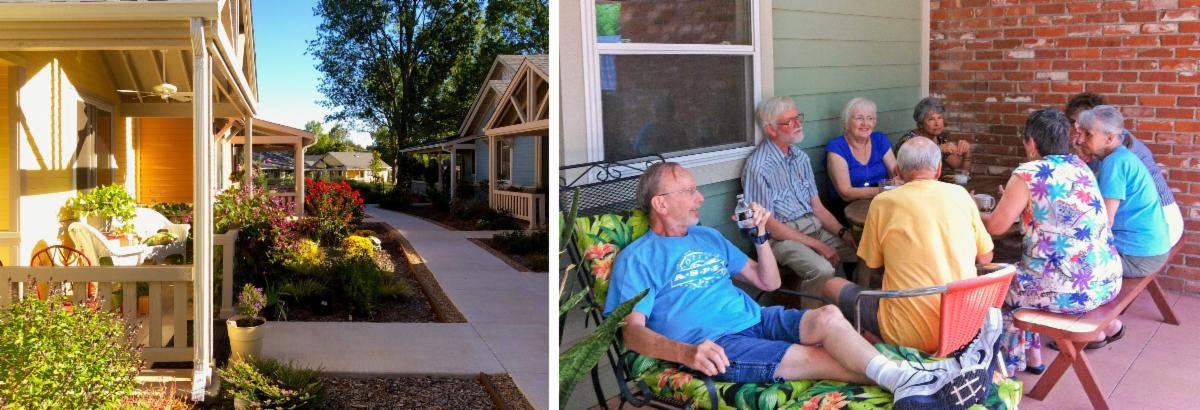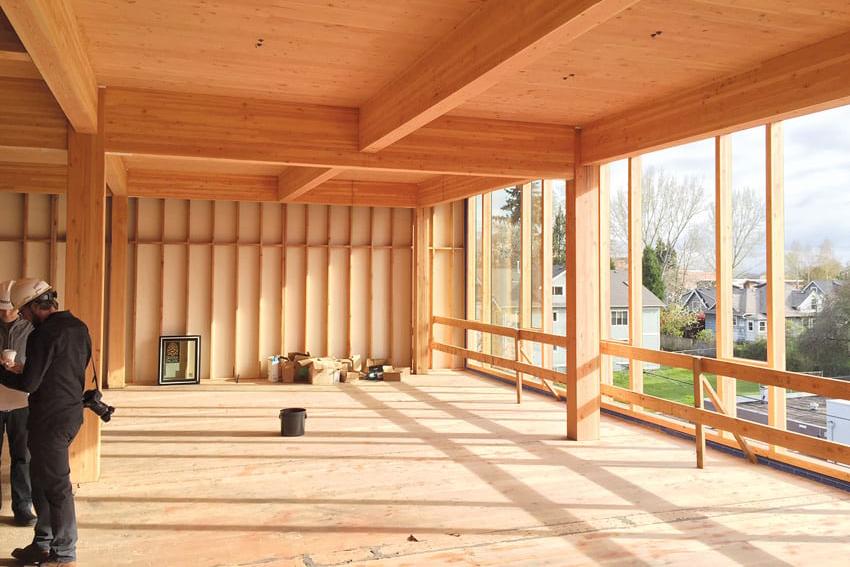|
The Cohousing Company
November 2023 Newsletter
| |
Community Story by Susan Smith, Cross Laminated Timber, and More | |
Everyone's Having Fun at the Harvest Festival in Nevada City Cohousing | |
Why I Moved from Hawaii to Oklahoma to Live in Cohousing
Susan Smith's Story
| |
In January 2022 I moved from Kona, Hawaii to Stillwater, Oklahoma, and it has been one of the best decisions I have ever made. How can that be possible!? And how did I know that this would be a good move for me?
I discovered the concept of Cohousing back in 2014 when I attended a Study Group I Conference in Nevada City with Chuck Durrett. I was able to get the skills and confidence to be proactive about planning a successful retirement scenario. While I didn’t have all the details, I knew that if I ever got a chance to move into a cohousing development I would jump at the opportunity.
|  | |
I grew up in small remote mountain towns where everyone knew each other and folks helped each other out. What I saw in cohousing really reminded me of that. I resonated with the idea of reducing my impact on the environment with a sharing economy, and the prospect of being in a group where I could contribute.
The desire to live in community was brought to the forefront when covid hit and we all realized even more vividly how devastating isolation can be.
| Oakcreek Cohousing Residents Preparing the Soil | |
After living on the Big Island of Hawaii for 23 years, I had the opportunity to move to Oakcreek Community in Stillwater, Oklahoma. I had known of this development since its early formation, and visited four times before moving. Now after almost 2 years here, I feel more strongly than ever that this was a fantastic move that sets me up for the best possible senior scenario as I age.
I like to say I traded good weather for community!
-Susan Smith
| |
Updates in Cohousing: Table of Contents
November 2023
|
- Cross Laminated Timber and Importance of Carbon Sequestration
- New Forming Community in Port Townsend, WA – Contact Correction
- Anti-Gossip Measure in Cohousing Community
| |
Cross Laminated Timber (CLT)
And the Importance of Carbon Sequestration
| |
The East Vancouver Cohousing Design Team is working to sequester carbon as much as possible through Cross Laminated Timber (CLT) and other wood construction. Perhaps if we capture as much carbon as possible, ennoble the wood, and ennoble our spaces, rather than burn it or let it rot, we can slow down global warming a tiny bit and buy ourselves some time, so that we can make serious progress to the other new technologies like carbon to clean energy so that we can then begin to cease global warming. |  | |
Cross Laminated Timber is a type of mass timber product that is strong, lightweight, and is now considered as a low-carbon alternative to concrete and and steel when it comes to building material—both in production and in positive carbon sequestration.
The total CO2 emissions from material production for the entire CLT building are reduced by almost 50% compared to concrete and steel buildings. The product also consists of 50% carbon by dry weight, making it effective at storing carbon well into the future, thereby lowering the rate of global warming in real time.
Throughout its entire lifecycle, including the harvesting of raw materials, manufacturing, transportation, construction, and eventual disposal or recycling, CLT exhibits lower embodied energy, generates less air and water pollution, and leaves a smaller environmental footprint.
| |
New Forming Cohousing Community in Port Townsend
Contact Correction & Group Update
| |
We made some mistakes in our previous newsletter about the new forming cohousing community in Port Townsend, and we sincerely apologize.
Thank you very much to all of the organizers: Kate Nichols, Eva Holmes, & Liz Revord. If you’re interested in the new in-town project, please email Kate Nichols at katennichols@yahoo.com. If you’re interested in the out-of-town project, please email Eva at eva@olympus.net.
| | |
|
Antioch University Special 3-Hour Workshop
Grassroots Organizing:
How to Get Your Cohousing Project Launched
Friday March 15, 2024
9AM (Pacific Time)/12PM (Eastern Time)
This course will mainly focus on the proven methods for grassroots organizing in creating cohousing communities, though other examples will be included as well. Grassroots Community Organizers are necessary out there, whether it is getting a new cohousing community built, or a new clinic, store, or a school all made locally.
Register Here
| | |
Anti-Gossip Measure in Cohousing Communities
And How Transparency Improves Relationship
| Illustration by Gwendle Le Bec | |
I’ve worked for a religious community in upstate New York over the years, the Hutterites, a pacifist community that’s been around for hundreds of years. It started in Switzerland in the 1500’s. There are two hundred people there and they built our common-house chairs.
Every trip there, I marveled at their anti-gossip posters that said:
“PLEASE don’t speak ill of your fellow neighbor, even to your spouse. Speak to the person that you are tempted to gossip about directly.”
Too many times someone has said something about someone else that simply turned out not to be true or too out of context, or too partial and incomplete but it made for an effective, dramatic, and hurtful sound bite.
| Illustration by María Medem | |
In most cohousing communities, neighbors give each other specific permission to talk to each other. Giving each other permission to do so is a known and effective anti-gossip measure. And if you don’t feel comfortable in doing so alone, you can always invite another neighbor.
While in Europe in September visiting cohousing, I did an exercise with various communities where everyone stands in a circle, and I asked them to please turn to the right and say to the person next to them,
“Hey Jane, I really really appreciate what you bring to our community. And if I ever annoy you, which I’m likely to do eventually, I hereby give you permission to come talk to me about it directly. And should you feel awkward or unsafe about it in any way, please invite another neighbor to join you.”
Then, trade places, get permission from that person, and then go around and give permission to everyone that lives in your community (and that are in the room).
It was extremely appreciated and well received. When groups do this, they report a decline in gossip by about 80–90% for about a year – then it’s worth doing it again.
We have so much beauty in cohousing communities, and there is malice towards none. Gossip is a kind of negativity and bullying that we don’t need.
Sincerely,
Chuck
| |
|
Books have played a major role from the beginning in terms of getting cohousing to this country and built in your town, starting with our first book Cohousing: A Contemporary Approach to Housing Ourselves (The European Story). Bookstores normally play a key role in culture change in general, and cohousing is no exception.
Many groups have contacted the publisher (New Society Press and John Wiley & Sons, Inc.) directly to get bulk discounts, and I find that successful projects get started when lots of folks do this fun homework. I usually need to give a dozen copies of Creating Cohousing: Building Sustainable Communities, Senior Cohousing: A Community Approach to Independent Living and Cohousing Communities: Designing for High-Functioning Neighborhoods away to planners, banks, neighbors, mayors, new residents, local architects, builders, and so on—to give them context. It saves the group thousands and thousands of hours, dollars, and delays, and most importantly makes for a better project.
Cohousing is more than a sound bite; it is cultural pivot, and it takes folks doing some fun research first. Seattle and the surrounding areas have about a dozen cohousing communities today largely because the bookstores in town have sold more than 1,000 copies of Creating Cohousing: Building Sustainable Communities and the San Francisco area has over 20 cohousing communities largely because the book has sold more than 2,000 copies there.
|
| | | |